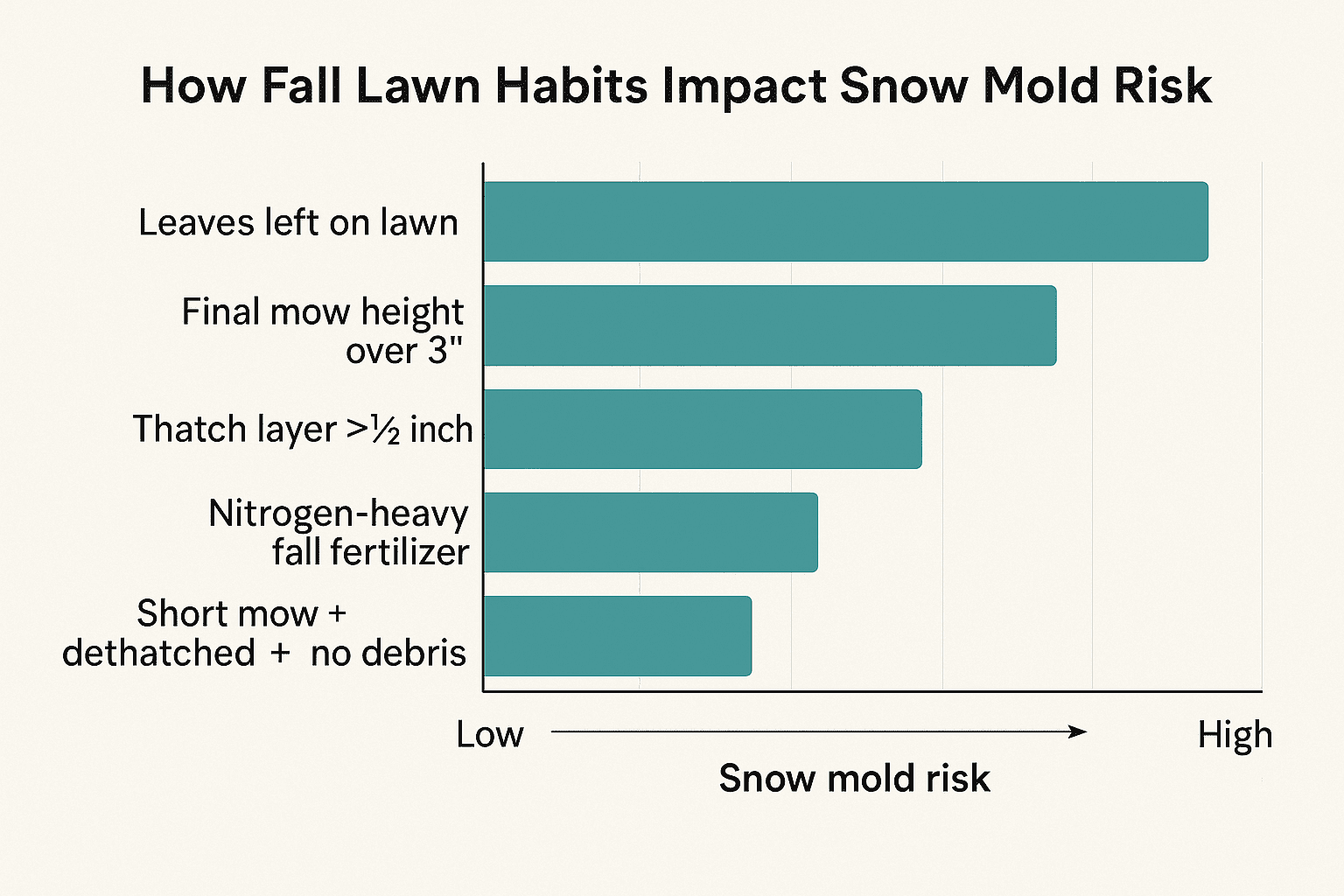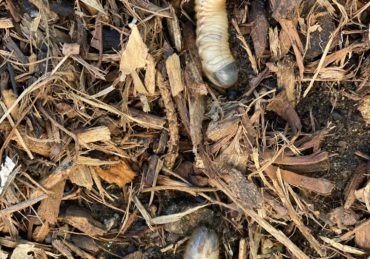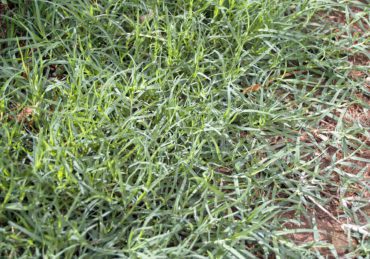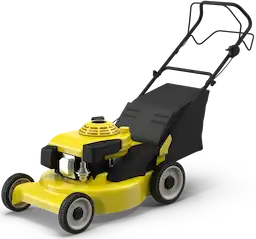Come early April, plenty of homeowners walk into their backyard expecting green grass, and instead find slimy, matted patches where snow just melted. It looks like mold. It is mold. But it’s not permanent, and it doesn’t mean your lawn is ruined. Let’s break down exactly what snow mold is, why it shows up, and how to get your grass back in shape fast.
Snow Mold Comes in Two Flavors: Gray and Pink
You’ll usually spot the damage in circular patches once the snow melts. The grass looks bleached or tan, often stuck flat to the ground. Sometimes it even has a fuzzy or web-like coating.
That’s snow mold, and there are two main types:
Gray Snow Mold (Typhula blight)
This kind pops up when snow sits for a while on unfrozen ground. It leaves behind dull gray or white patches and mostly affects the leaf blades. It’s not pretty, but it rarely kills the grass completely.
Turf disease research from University of Minnesota Extension notes that gray snow mold thrives under long, consistent snow cover, while pink snow mold can appear even without it.
Pink Snow Mold (Microdochium patch)

Pink snow mold doesn’t need deep snow, just cool, wet conditions. It’s redder in color and more destructive. In some cases, it kills the crown of the plant, not just the blades. That means slower, patchy recovery in spring.
Note: Snow mold usually looks worse than it is. Most lawns bounce back with a little warmth and spring lawn care and airflow.
Where and When Snow Mold Usually Shows Up
The trouble starts before you even see it.
Snow mold develops in late fall and sits dormant all winter. The real damage shows when snow melts in early spring, especially in spots where snow stuck around the longest, like shaded corners, driveway edges, or under leaf piles.
Here’s how it happens:
- Snow falls before the ground is frozen
- Moisture gets trapped under the snow
- Fungal spores activate and feed on damp, matted grass
- Mold damage surfaces once the snow disappears
In most northern climates, snow mold damage is most visible from late March through mid-April, depending on when snow cover disappears.
Poor Lawn Habits Make Snow Mold Worse
Plenty of snow isn’t the only reason snow mold gets a foothold. What you do, or don’t do, before winter sets in matters more.
Leaving the Grass Too Long
If your final mow leaves the lawn at 3+ inches, you’re basically asking for matted, fungus-prone turf. Long grass flattens under snow and creates the perfect habitat for mold spores to spread.
Ignoring Thatch Buildup
A thick thatch layer acts like a sponge. It traps moisture and keeps sunlight from reaching the soil. That gives fungal spores exactly the environment they need.
According to UMass Amherst Turf Program, lawns with more than half an inch of thatch see much higher snow mold activity because that organic layer locks in moisture beneath snow cover.
Overdoing Fall Fertilizer
If you load up your lawn with nitrogen-rich fertilizer right before winter, you’re encouraging soft blade growth. That lush growth dies under snow and becomes fungus food.
Pro Tip: Drop your final mow height to 2 to 2.5 inches and dethatch if buildup is thicker than ½ inch. That’s your best shot at mold-free spring turf.

What Snow Mold Looks Like (And What It’s Not)
The first time you see snow mold, it’s easy to mistake it for something else. But a closer look helps separate mold from other winter damage.
How Snow Mold Shows Up
- Gray mold: Dull, fuzzy, silver patches, often a foot wide
- Pink mold: Pale pink spots with a moist or slimy surface
- Texture: Matted, stuck-together grass blades that feel damp
- Location: Often where snow lingered, shady spots, along pavement, or under leaf piles
What It’s Not
- Frost damage: Affects only blade tips, goes away on its own fast
- Winterkill: Entire sections of dead grass, dry and brittle
- Dog spots: Small yellow burns from urine, not mold-related
Reality Check: If your lawn looks like straw in early spring, don’t panic. Most of it isn’t dead, it’s just waiting for warm weather and a bit of airflow.
What to Do (And Not Do) When You Spot Snow Mold in Spring
You don’t need to rip up your lawn or spray chemicals the moment you see mold patches. In most cases, the fix is surprisingly low-effort.
Gently Rake It Out
Wait until the lawn has dried out a bit. Then gently rake matted areas to fluff the grass and improve air movement. This also exposes fungal growth to sunlight, which naturally slows it down.
Let the Lawn Dry Before Mowing
Once your lawn firms up and starts growing again, mow at your usual height, removing no more than the top third of the grass. The airflow and movement help the lawn recover faster.
Warning: Don’t fertilize immediately. That can stress already weak grass. Wait until your lawn shows signs of new growth before feeding it.
Spot Treatments Are Rarely Necessary, But Here’s When They Help
If a few patches still look rough after raking and drying out, you’ve got two options: overseed or treat lightly.
Overseeding Bare Spots
Once the soil warms to around 50°F, you can overseed thin areas to fill them in. No need for heavy prep, just loosen the surface with a rake and apply seed directly.
Avoid Fungicide in Spring
Most fungicides aren’t designed for curative treatment of snow mold. Applying them now can slow recovery by trapping moisture in. Focus on natural recovery instead.
Recovery in northern lawns can take 3–6 weeks, depending on spring weather. Be patient.
Fall Prep Is Your Best Defense Against Snow Mold
If snow mold is a repeat visitor on your property, it’s time to change how you wrap up fall.
Mow Low Before Snowfall
Start lowering your mowing height in October. By your final mow, aim for 2 to 2.5 inches to prevent matting and improve air circulation under the snowpack.
Clear Out Leaves and Debris
Leaves left on the lawn act like a second snow cover, wet, dark, and mold-prone. Rake thoroughly before the first frost hits. In cold climates, plan to finish your fall cleanup by late October or early November.
Note: The worst snow mold seasons happen when early snow arrives on unfrozen ground. Watch for early-November snowstorms, they’re a red flag.
Snow plowing services can also help reduce the risk of early mold outbreaks by clearing packed snow fast.
Should You Use Fungicide in Fall?
In most residential lawns, fall fungicide isn’t necessary. But if snow mold hits you hard every single spring, it might be worth it.
The University of Wisconsin Horticulture Extension advises fungicide treatment only in severe or recurring snow mold cases, healthy lawn care often prevents it naturally.
Here’s how to apply it properly:
- Mow to 2 inches first
- Rake out all debris
- Apply a labeled snow mold fungicide evenly
- Do not water afterward, fungus thrives in wet conditions
Best timing: Apply fungicide after Halloween, when soil temps drop below 50°F but before lasting snow arrives.
FAQ
Can snow mold kill my grass?
Usually not. Snow mold mainly damages the blades, not the crown or roots. Most lawns bounce back with warmth, airflow, and light maintenance.
Is raking safe if I see snow mold?
Yes, as long as the lawn is dry. Rake gently to avoid tearing up roots. This helps restore airflow and break up matted spots.
What’s the difference between pink and gray snow mold?
Pink snow mold is more aggressive and can kill the crown. It thrives in cool, wet weather, even without snow. Gray mold needs deeper snow cover and is mostly cosmetic.
Do I need to reseed after snow mold?
Not always. If your lawn hasn’t filled in by late April, overseed the bare areas once soil temps reach 50°F.
Should I apply fungicide every year?
Only if you have severe, recurring damage. Most snow mold issues resolve with better fall care, shorter mowing, light fertilizer, and regular leaf cleanup.
When DIY Recovery Isn’t Cutting It
If snow mold left you with large dead zones or spring recovery is crawling along, we’re here to help. At LawnGuru, we’ve handled everything from patchy turf bounce-backs to full reseeds and spring overhauls.
Getting your lawn back on track doesn’t have to be complicated, sometimes it just needs a little outside help. Let us take care of the hard part so your yard looks like it never missed a beat.





